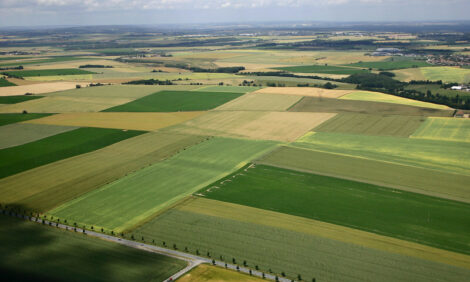



Weekly Outlook: Conservation Reserve Program
URBANA, US - The debate surrounding the Conservation Reserve Program (CRP) is an indication of the concern about production risk in 2008 and the implications for crop prices and the resulting impact on livestock producers and, ultimately, on food prices, said a University of Illinois Extension marketing specialist."This concern may not subside until a clearer picture of 2008 U.S. and world production prospects unfold," said Darrel Good. "While the current focus is on acreage, prospective yield will become the focal point later in this spring.
"Crop prices should continue to be well supported, but perhaps in a wide range, for the foreseeable future."
Good's comments came as he reviewed high crop prices and the CRP. Continued strong demand for U.S. crops, prospects for low levels of year-ending stocks, and uncertainty about the size of world crops in 2008 are keeping crop prices at very high levels.
"As I noted last week, a case can be made that the United States needs to devote a total of five to six million more acres to corn, soybean, and wheat production in 2008," he said.
"The obvious question is where does such an increase come from? Part of the increase would come from reduction in other crops. If the reduction comes from other feed grain or oilseed crops, the effect might be an increase in demand for corn and soybeans, resulting in no net advantage."
That type of switch, he added, would not ease the potential supply shortage. A modest reduction in forage and grassland might be possible.
"Increasingly, the CRP is being eyed as a potential source of increased cropland in the near future," he said.
Contracts on 5.1 million acres enrolled in the CRP expired on Sept. 30, 2007. New contracts were established for 2.6 million of those acres, so that 2.5million acres left the program. As of December 2007, the USDA's Farm Service Agency reported 753,000 CRP contracts for a total of 34.6 million acres.
"There are basically two ways for additional acreage to leave the program," Good explained. "One would involve an administrative or legislative decision to allow early termination of existing contracts without financial penalty to the landowner.
"Landowners, then, would have to be willing to withdraw acreage from the program and devote those acres to crop production. Theoretically, such action could be taken before the spring 2008 planting season, but seems highly unlikely."
The second method is for landowners to return current CRP acreage to crop production upon expiration of existing contracts. That decision could be influenced by an administrative decision about whether to offer the landowner an opportunity to re-enroll the acreage in the CRP and the level of rent to be paid on that acreage.
"The persistence of high commodity prices would likely force CRP rents to be significantly higher in order to compete with the potential profitability of crop production," he said. "Additional CRP contracts will not expire until Sept. 30, 2008. Contracts for only 1.3 million acres expire at that time. Nearly half of those acres are in five states--Iowa, North Dakota, South Dakota, Texas, and Washington.
"Contracts on an additional 3.9 million acres expire on Sept. 30, 2009. Currently, there appears to be little administrative support for early termination of CRP contracts, implying that additional cropland acreage--beyond the expired CRP contracts of 2007--will not be available in 2008 and only a small increase might occur in 2009."
The USDA's baseline projections developed late last fall, but only released last week, contained a projection for a sharp increase in planted acreage of the eight major field crops in 2008. That projected combined acreage for corn, sorghum, barley, oats, wheat, rice, upland cotton, and soybeans was at 252.6 million acres, 6.1 million more than planted in 2007.
"Only 1.3 million acres of that increase was expected to come from land leaving the CRP," Good noted. "In total, 2008 CRP acres were projected to be only two million less than in 2007. Presumably, 4.8 million of the additional 6.1 million acres devoted to the eight major crops would come from reductions in other crops, including grassland."
The USDA baseline projections of acreage by crop in 2008 are not especially helpful due to the change in market conditions since last fall. For example, the projected 5.6 million acre reduction in corn plantings in 2008 was made when carryover stocks at the end of the current crop year were projected at nearly 1.9 billion bushels.
"With year-ending stocks now projected at 1.438 billion and consumption occurring at a faster rate than projected, a larger 2008 crop is required than appeared necessary last fall," Good said. "In addition, the projected U.S. average corn yield for 2008 was 155.3 bushels per acre. That projection was made when the 2007 yield was thought to be 153 bushels, rather than the 151.1 bushel final estimate.
"Such a large decline in acreage would likely result in a supply shortage and higher prices."
TheCattleSite News Desk



